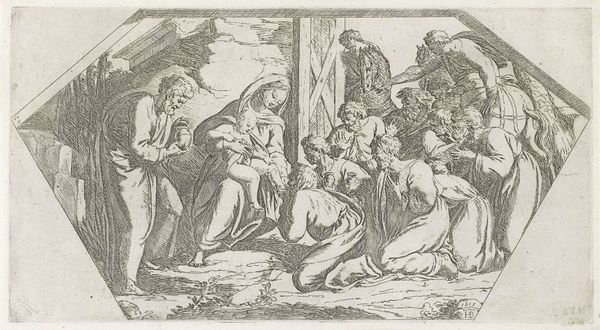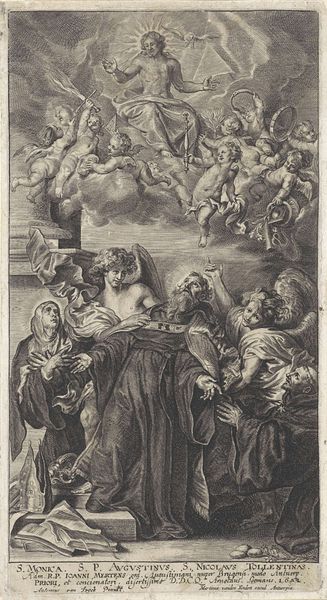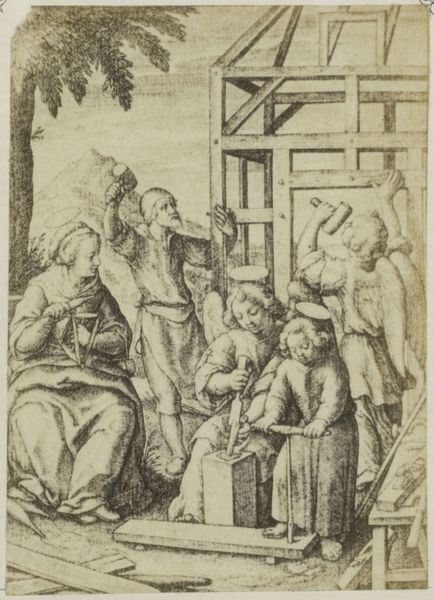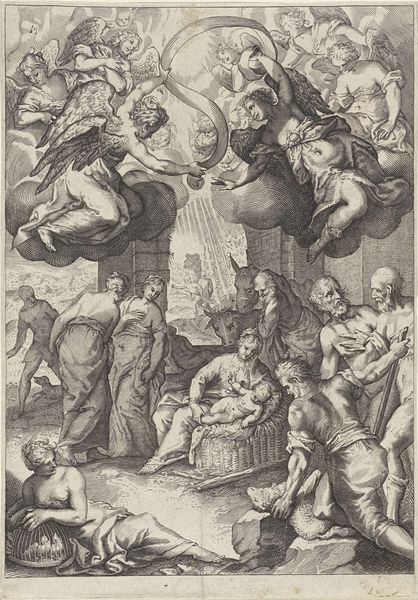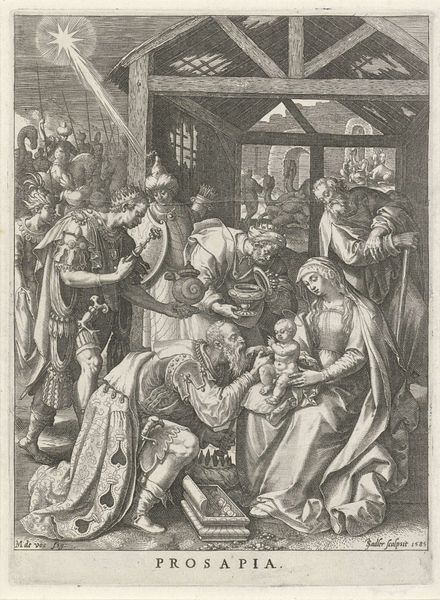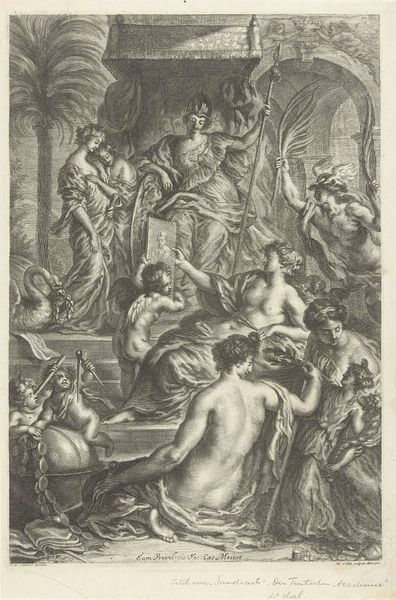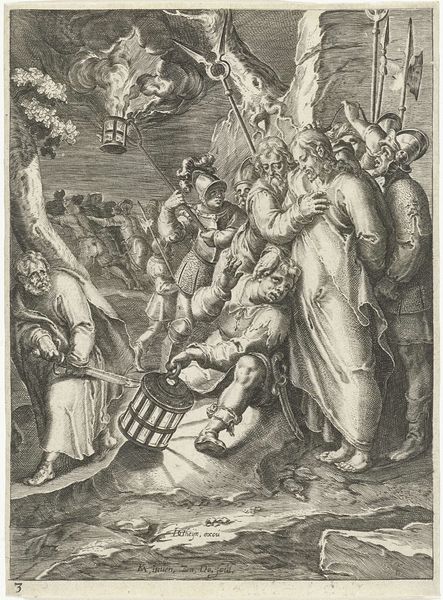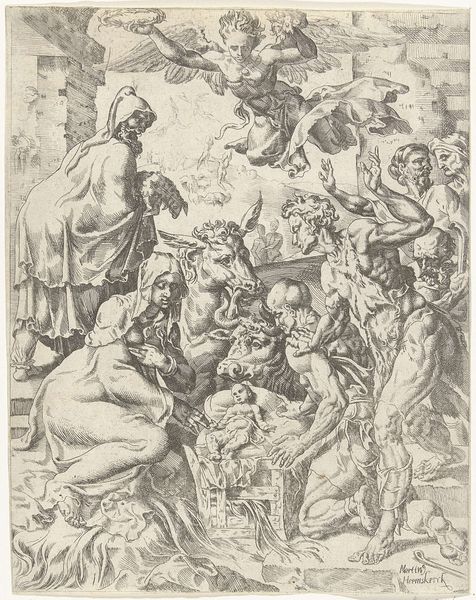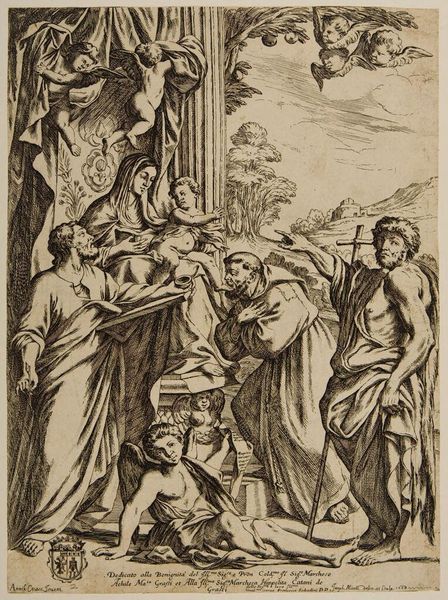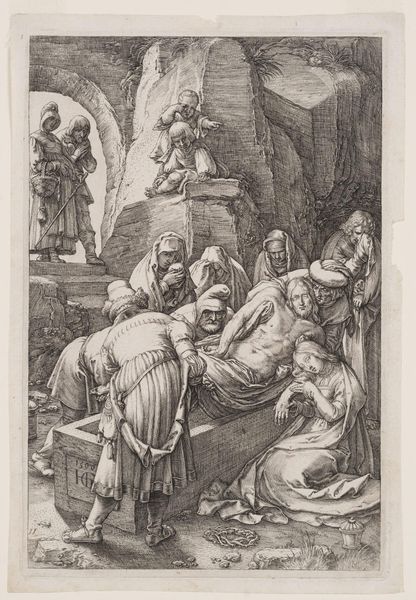
print, engraving
#
portrait
#
narrative-art
# print
#
mannerism
#
figuration
#
line
#
history-painting
#
engraving
Dimensions: height 228 mm, width 147 mm
Copyright: Rijks Museum: Open Domain
Curator: Standing before us is "Groep figuren onder ster," a 16th-century engraving by Giulio Bonasone, currently residing here at the Rijksmuseum. Editor: My first impression is of a strangely ethereal and perhaps slightly unsettling gathering. The figures are so closely packed together and their expressions are enigmatic. There’s a mix of vulnerability and implied narrative that draws me in. Curator: Bonasone, operating in the Mannerist style, often revisited classical and mythological themes. This work fits into the broader historical context of printmaking's rise as a means to disseminate ideas and artistic styles across Europe. How do you see that influencing the themes and their accessibility here? Editor: Considering that, I look at the arrangement of both male and female bodies. The women are mostly nude, in idealized, classically inspired poses, reflecting an expected level of aesthetic value to an audience, but also bringing questions of identity to the forefront, as well as exploring dynamics around power and desire within patriarchal systems. Curator: The stark line work really emphasizes their physical presence, doesn’t it? Note too how their positioning seems deliberate. Are they beseeching or celebrating the star above? What meaning can we glean from this presentation within 16th century social beliefs, as religion dictated public image? Editor: Indeed. If we analyze this using more contemporary critical lenses, what is the narrative Bonasone paints? This is the perfect intersection between art history and contemporary social narratives as applied through different perspectives. What do these semi-nude bodies symbolize in that period, especially grouped and framed through a certain religious point of view? Curator: Contextualizing artwork with modern ideologies creates a critical dialogue that examines the role of art in society and power dynamics. Editor: Absolutely. In many ways, art serves as both a mirror and a catalyst, inviting us to understand history in relation to current ideologies. Considering where we’ve been is equally important to reflecting on how far society must still evolve. Curator: Precisely, and Giulio Bonasone's work serves as an exceptional lens through which to do so.
Comments
No comments
Be the first to comment and join the conversation on the ultimate creative platform.
